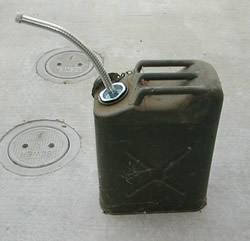
*Gasoline Shelf Life*
There are many myths and misconceptions out there regarding the shelf-life of gasoline. I recently discovered, through first hand experience, that if properly stored, the shelf life of gasoline isn't as short as many think. I've recently been working on getting more storage for gasoline and realized that I had totally neglected a filled Jerry-can that I've had since 1995, or so.
The neglected Jerry-can with nozzle

I thought that the gas would be stale and completely inert from that length of time in storage and was positive that I would have to pay fees to dispose of it. Not wanting to pay unnecessary fees, I decided to try igniting some of it to see if it was still usable. I poured a small amount of gas out into a small container and noticed right away that the color was darker than fresh gasoline. I smelled it and couldn't smell the usual sour smell of stale gasoline. It actually smelt fine.
On the left is fresh gasoline, and on the right is the aged gasoline.
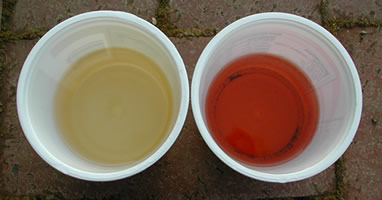
Notice the sediment on the bottom of the cup of old gasoline. Even though the Jerry-can nozzle had a screen filter on it, this sediment still got through. To filter it out, I took a #4 coffee filter and put it on the nozzle, wrapped it around and used electrical tape to secure it. This worked really well. Not one grain of visible sediment got through, and the filtered nozzle can still fit into my lawn mower's gas spout if the gas proves usable.
Left: #4 coffee filter affixed to nozzle. Right: Filtered gasoline without sediment.
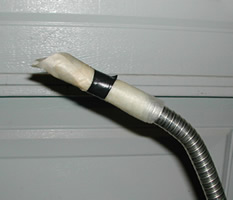
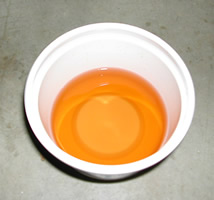
Moving on with the experiment, I poured a small amount of fresh gas into an empty tuna can and lit it. I did the same with the old gasoline. To my surprise, the old gasoline ignited with just as much ferocity as the fresh gasoline.
Left: fresh gasoline. Right: old gasoline.
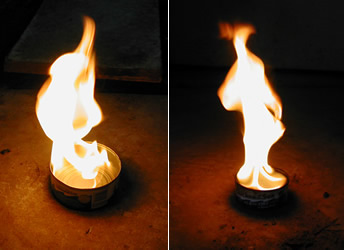
So, at this point, I knew it was still combustible, so I decided to see how my lawnmower would deal with it. I filled up the tank, and it started up fine and ran without any noticeable difference in performance. I mowed the whole front and back yard with this 10 year old gasoline! I was totally amazed. And, turning this into an experiment actually made mowing the lawn fun. :)
I have had gas go inert in less than a year in plastic gas cans before, so this came as a total surprise to me. Especially since gas companies claim that their gas will only store for up to a year. Since moisture and temperature are the key enemies for gas storage, the air-tight metal container and mild California weather, must have preserved it much better than the cheap plastic containers I've had.
The really perplexing part is that I don't ever remember treating this fuel with any stabilizer, because I didn't even know about gas stabilizers until a few years ago. But I could have added it at a later date and just forgot about it. Another factor could be that this fuel may have been produced using the older straight-run processes, which were more stable, and didn't deteriorate as fast as today's fuels. And, if I did happen to add stabilizer at a later date, stabilizer could have restored it to it's current usability. Products such as PRI-G claim that even the most stale and gummed up gas can be restored to usable specification, although, it does not restore the fuel to it's original color.
So now, with a modest, but growing fuel storage plan, I plan on applying stabilizer to the fuel at least every 9 - 12 months until rotation. Even though this experiment had acceptable results for my lawnmower, I'm not willing to take a chance with it in BOV. Next time, I'm not leaving anything to chance. Now I'm putting a card on each can with the date of purchase, with a schedule for applying stabilizer and for rotation.
Palindrome
www.alpharubicon.com
All materials at this site not otherwise credited are Copyright © 1996 - 2005 Trip Williams. All rights reserved. May be reproduced for personal use only. Use of any material contained herein is subject to stated terms or written permission.